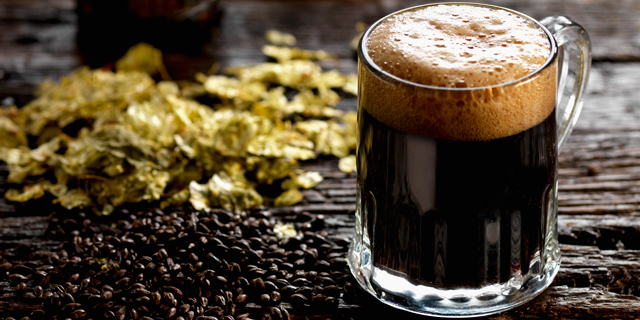Stout, the broodingly dark, wicked-good bitter brew has a bloodline rooted in British pubs and German rathskellers. Now we can add Latin cervezerías to the list. Brewers in Central and South America and Spain are cooking up Latinized versions of this creamy, full-bodied beer style.
“A growing number of Latin breweries are producing very good stouts, commonly referred to as cerveza negra, or black beer,” says Eric Lorberfeld, owner of Growlers Beer Bistro in Tuckahoe, New York. “This beer style has its roots in Germany, and since Argentina is a country with many German immigrants, it’s no coincidence that Argentina’s best-known brewery, Quilmes, produces one of the region’s best stouts.”
Beer is no stranger to Latin America, in fact, the first brewery in the Americas was founded in Mexico in 1542. Fast-forward to 1959, when a group of Latin American beer makers met in Lima, Perú to establish the Asociación Latinoamericana de Fabricantes de Cerveza (the Latin American Association of Beer Manufacturers), known today as Cerveceros Latinoamericanos.
Brendan Woodcock, a certified Cicerone and independent beer consultant in New York, notes that Mexico’s fleeting period of Austro-Germanic rule under Maximilian I added an Austrian influence to local brewing traditions.
“In the absence of readily available hops, both Mexican and Brazilian brewers have been free to use local ingredients,” Woodcock adds. “In Spain, brewers had no historical brewing tradition to follow, which meant total freedom of creativity.”
Next, find out the top 7 Latin stouts and how to pair them…
[pagebreak]Here are our top picks for Latin stouts, with food pairing suggestions from Woodcock and Lorberfeld:
Calavera Mexican Imperial Stout (Tlalnepantla, Mexico). In addition to British hops, which add some bitterness and grassy notes, and dark rich malts that produce coffee and chocolate flavors, this stout is brewed with chile peppers. Pair this one with mole.
Quilmes Stout (Buenos Aires, Argentina). With sweet, roasted malt notes and a hint of licorice, you’ll also detect chocolate. Lorberfeld suggest pairing this stout with empanadas, asado, or chocolate-dipped alfajores.
L’Anjub Juliett (Ribera d’Ebre, Spain). Notes of espresso, chocolate, tobacco, and cream make this a suitable match for pulled pork. “The bitterness of the roast is a nice counterpoint to the fat of the pork,” observes Woodcock.
Invicta Imperial Stout (Ribeirao Preto, Brazil). You’ll taste roasted coffee, sweet chocolate and a trace of smokiness. “I would pair this with a nicely aged gouda, and figs and dates at the end of a meal,” Woodcock suggests. “And you can’t go wrong with Imperial Stout and vanilla ice cream.”
Baden Baden Stout Dark Ale (Campos de Jordao, Brazil). From the “Brazilian Switzerland” town outside Sao Paulo, this ale has notes of roasted sugar and toffee. Woodcock suggest pairing it with flan. “You’re matching the toffee notes in the beer with the burnt sugar in the flan.
Alhambra Negra (Granada, Spain). With a malty nose and a touch of lemon flavors, this Spanish stout also displays malt and some “burnt toast bitterness—in a good way,” says Lorberfeld. He pairs it with paella or any chorizo dish.
Nomada Moose Islay (Sabadell, Spain). This imperial stout is brewed with muscodavo sugar and vanilla. Aged on wood from Islay single malt whisky barrels, you’ll get peaty smokiness, licorice, roasted coffee, and dark chocolate. Woodcock would pair this with a dark chocolate cake topped with a salted dulce de leche.


![Making Mealtime Matter with La Familia: Easy Sofrito [Video]](https://thelatinkitchen.com/wp-content/uploads/2015/10/sofrito-shutterstock__0-500x383.jpg)
![Easy Latin Smoothies: Goji Berry Smoothie [Video]](https://thelatinkitchen.com/wp-content/uploads/2015/12/goji_berry-shutterstock_-500x383.jpg)
















![Fun and Fast Recipes: Fiesta Cabbage Salad [Video]](https://thelatinkitchen.com/wp-content/uploads/2015/11/fiesta_cabbage_slaw-shutterstock_-500x383.jpg)









